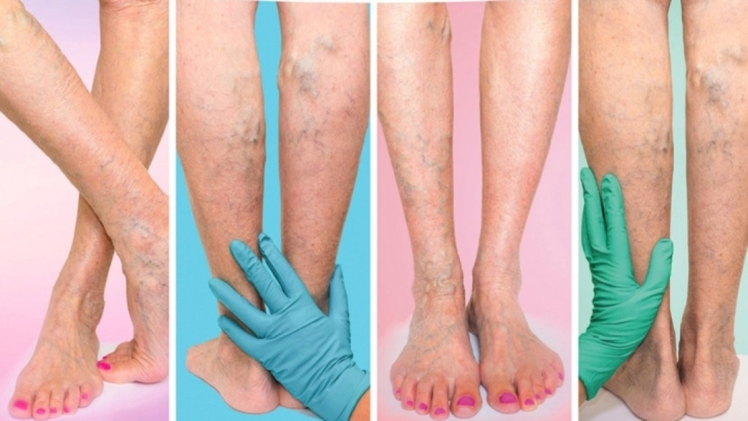Varicose veins refer to a condition that affects the superficial veins in the body. The disease mainly affects the veins in the legs. The legs get blood supply to provide oxygen and nutrients from the heart through arteries. This blood then returns to the heart through veins. The veins have valves that prevent the backflow of blood in the legs. However, these valves are incompetent in varicose veins. This incompetence causes blood to flow back and remain stagnant in the veins of the legs. Stasis of blood causes the veins to become large and develop a blue or purple discoloration.
The skin that surrounds these veins can also develop an abnormal color. Most people with varicose veins in Glen Rock do not have any symptoms. However, some people develop pain, swelling, and itching when they have varicose veins. There are different treatment modalities for varicose veins. These options include sclerotherapy in Glen Rock, wearing compression stockings, laser treatment, and venous stripping and surgery. When the doctor examines you, they come up with an appropriate treatment plan for you. This article highlights the prevention methods of varicose veins.
-
Weight Management
One of the risk factors of varicose veins is obesity. Obesity causes varicose veins by putting pressure on the valves. This pressure makes the valves incompetent, and blood starts stagnating in the legs. To avoid these problems, you can lose excess weight. There are different methods that you can use to manage your weight. For instance, you can do exercises to burn the extra fat. You can take walks and choose the stairs instead of using the elevator. Swimming also helps in weight loss. Another method of weight loss is eating a healthy diet. It is advisable to avoid eating junk food that can make you obese. If you are having challenges losing weight, you can seek help from a specialist.
-
Exercise
The muscles in the legs, especially the calf muscles, help pump blood back to the heart, thus lowering the risk of developing varicose veins. This function is more effective when the muscles are contracting. Muscle contraction mainly occurs when the muscles are active. Therefore, sitting or standing for long durations are risk factors for varicose veins. It is essential to stay active to lower this risk. Ensure that you take breaks and do some exercise and move your legs. Taking walks and going to the gym are other effective forms of exercise that can prevent varicose veins.
-
Elevate Your Legs
Varicose veins develop gradually. The early stages may involve leg swelling because of the blood that accumulates in the legs. You can prevent this discomfort by elevating your legs to improve the venous return of blood to the heart. Wearing compression socks can also help to resolve the swelling.
-
Eat a Healthy Diet
You can also lower the risk of varicose veins by eating a healthy diet. Some foods can increase fluid accumulation in the body and therefore worsen the risk of varicose veins. For instance, a diet that has a lot of salt can increase fluid accumulation. It is also advisable to eat a diet that is rich in vegetables, minerals, and fiber.
In summary, varicose veins can cause some distressing symptoms like pain, itching, and heaviness of the legs. You can prevent varicose veins by managing your weight, exercising, elevating your legs, wearing compression stockings, and eating a healthy diet. If you already have the condition, you can benefit from various treatment modalities that are available.
crunknews.com The Modern Coffer of Information

